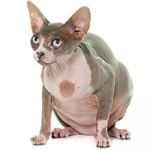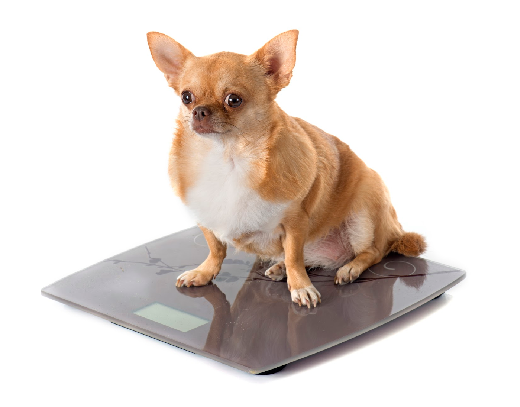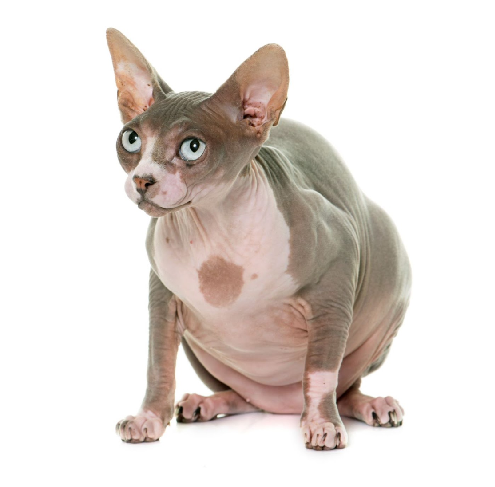
Obesity pets (Article and Video)
Obesity is defined, according to WHO, as ”abnormal or excessive fat accumulation that presents a risk to health”. Nowadays, we count nearly 35% cats and 30% Overweight dogs in France and Belgium.
Pathogenesis of obesity and health impact
An organism undergoes a weight gain when caloric intake that it is provided exceeds the amount of energy expended : concretely, too much food is given to the animal in relation to its needs. This excess energy will be stored as fat, which can be responsible for various health problems.

Excessive caloric intake may be the consequence of a poorly adapted diet or lack of exercise but other factors, as a potential stress, must also be taken into account. Indeed, some studies have shown that our pets may experience boredom and frustration, especially when they live a very sedentary life. These stressors encourage excessive food intake. The obese animals therefore generally is an animal that lives inside, sterilized and has access to food ad libitum.
Obesity has adverse effects on the body. Many veterinarians animal nutritionists have studied the health problems in obese animals. The finding is striking : these animals have a poorer comfort of living and the risk they present some diseases is increased in a very significant.
The quality of life of the obese animal is altered. He gets tired faster, plays less ... Even the simple act of getting up becomes more complicated ! He introduces, Furthermore, difficulty breathing because excess fat located at the chest compresses the lungs have less room to expand. The obese animals also often struggling to make her toilet correctly.

Some diseases are much more common in obese animal as : osteoarthritis, the conditions at the spine, a tendency to high blood pressure, the occurrence of certain cancers, the rupture of anterior cruciate ligament in dogs or a risk three times greater of developing diabetes mellitus type 2 in cats.
During surgical operations, obese animals less tolerant anesthesia; it may take longer to wake up because some anesthetics are stored in fat and are eliminated much more slowly.
Finally, when net overweight, the skin of the animal extends and forms folds which constitute friction areas. These frictions irritate the skin becomes very sensitive to bacterial infections and prone to the appearance of skin fungus.
Generally, the life expectancy of an obese pet is reduced by almost two years !
Diagnosis
It is difficult to calculate the ideal weight of dogs or cats because of large gaps exist in terms of their morphology or their activity level. To diagnose obesity, Veterinary uses different tools as benchmarks based on the appearance of the animal. The video associated with this article tells us how to properly assess the weight of his pet.
Treatment
For all the reasons listed above (loss of living comfort, highly increased risk of developing certain diseases ...), it is essential to help an obese animal to lose weight and why, veterinarian and owner must work closely.
The animal must, not only, lose weight in the short term but also maintain a healthy weight over the long term.
The most effective diet is to restrict caloric intake and increase exercise. The veterinarian calculates the patient's energy needs to determine the right amount of food. Low calorie foods will be used and specific games and caresses will replace the food rewards.
Games and sports, including agility, have a double interest : they increase energy expenditure and also stimulate the dog, avoiding boredom.
When setting up a plan for an overweight cat, it must be taken to ensure that the proposed new food is well used. Indeed, an obese cat does not eat for over 24 may suffer from "hepatic lipidosis", a condition that involves the vital prognosis of the animal. It is therefore very important that the owner takes care to keep a diet log that lists the amounts of food distributed and eaten by his pet.
Once the system set up, the vet is consulted regularly to monitor weight loss and adjust the plan if necessary.
The proposed link below redirects you to the programs allowing you to precisely calculate the needs of your pet and the amount of food to give.
Calculating the amount of kibble to feed my pet
Sources
- Merck Veterinary Manual,
- petobesityprevention.org,
- wsava.org,
- bsava.co.uk,
- World Health Organization,
- https://www.vetsmall.theclinics.com/article/S0195-5616(06)00096-9/abstract
Author : M. Hugo hope veterinary student – Vetup®
